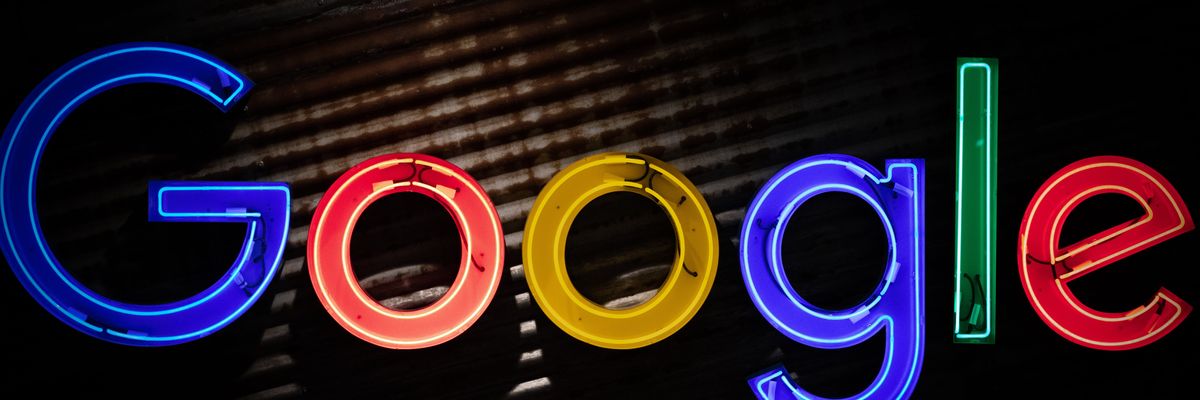Amid the buzz of an always-on news cycle, it’s baffling that the most pivotal trial of the year has gone largely unnoticed.
The antitrust trial against Google’s search engine monopoly has slipped under the radar, and it’s a damning reflection of the state of our public court system. At its core, this trial delves deep into the crisis of economic concentration plaguing our society. The government contends that Google’s monopoly stifles innovation and raises costs for advertisers, ultimately burdening consumers.
But here’s the catch: Gaining access to this trial is an arduous task. In an era of unprecedented connectivity, we find ourselves isolated from proceedings.
Remote audio access, once a pandemic-era lifeline, has vanished. Even for the lucky few who attend in person, a peculiar ritual unfolds when they step into Courtroom 10 on the fourth floor of the federal district court in Washington, D.C.—cellphones are switched off and all electronics are stashed away. It was my privilege to be among the select audience during the first week of the 10-week marathon, and my notepad brims with hastily scribbled notes as testament to this rarified and restricted access.
Imagine a courtroom with no audio access, no cameras, no phones, and limited access to crucial exhibits. The witness list, the cornerstone of any trial, remains hidden until the eleventh hour. Federal District Court Judge Amit Mehta, who is overseeing and will rule on the case, adopted an early policy of deference to Google, granting them near unilateral power to decide what’s sensitive. As a result, in a trial about the existence of monopoly power, we lack data on Google’s market share. The terms of Google’s agreement with Apple, which, according to an unidentified senior Apple employee, enables the titans to “work as if we are one company,” is similarly concealed from public view. Even information about their original agreement from 2007 is deemed commercially sensitive—in 2023.
This case hinges on the power of agreements that establish valuable default status for Google’s lucrative search engine, which has enabled Google to maintain about 90% of the entire market, by some estimates — yet the court prevents the public from knowing how market dynamics change when those defaults are altered. In the midst of public skepticism regarding the Supreme Court’s conflicts of interest, we entrust the courts with safeguarding our fundamental right to public access, yet these glaring gaps undermine both transparency and accountability in our judicial system. The graphs and data we do end up getting to see are the result of intense struggles behind closed doors.
Last week, lawyers for the New York Times stepped into the fray to demand greater media access to trial testimony and exhibits. Judge Mehta was largely unmoved, relegating the question to daily squabbles over whether upcoming testimony should be sealed. To have a voice in those on-the-fly decisions, though, requires media outlets to allocate substantial resources, including making their lawyers present daily for the remainder of the trial. Worse, they’ll be arguing against Google’s sole knowledge of the forthcoming testimony and unilateral ability to argue its sensitivity.
To the extent government agencies should also be advocating for public access to court hearings, those agencies are already massively under-resourced to conduct their core obligations. To wit, the Federal Trade Commission, charged with protecting our entire economy from unfair and abusive monopolies, has lost a third of its appropriated staff—approximately 500 full-time staff—since 1980. By comparison, the Department of Justice is down 352 staff since 1979. In the same period, the economy has expanded six-fold and concentration has become ubiquitous across industries. In 2021, over 3,500 merger transactions were reported to the agencies, an 87% increase over the average number reported over the prior five years. In the FTC’s various litigation against Meta/Facebook, the FTC claims to be outgunned 10 to 1. The dynamic established by the courts renders the best-resourced private monopolies equipped to argue for the secrecy of trials that are public, if in name only.
Greater public access to trial proceedings is possible. During the pandemic, we glimpsed an alternative, as rules were established to allow audio feeds to trials. People hung on every word of Microsoft’s $69 billion acquisition of game studio Activision-Blizzard. Social media was abuzz with debates about key testimony as it unfolded. The sudden expiration of these rules just as the Google trial began was the reason for Judge Mehta’s rejection of a timely request for a live audio feed by American Economic Liberties Project. It was a blow to those who had savored the taste of greater public access to big courtroom drama.
In an altogether separate matter, NBC Universal has filed an application to gain audio-visual access to the upcoming trial of former President Donald Trump, stressing the First Amendment implication of denying such access. Debates over secrecy are more than just a sideshow distraction from the facts and substantive merits of these cases. It’s more than just time-consuming, costly and draining for both the public and the court itself. It invokes constitutional issues that go to the heart of our judicial system.
The path forward is clear and achievable. The Judicial Conference, a body of federal judges overseeing the operation of our federal courts, must adapt to the way the modern world accesses information and revise its rules to permit the broadcast of trials. They have studied the effect of cameras in the courtroom since at least 1988, with numerous committees recommending their introduction for both civil and criminal proceedings. The technology for enabling that access has undergone paradigm shifts in that time. We saw a glimpse of what’s possible when audio access was permitted during the pandemic, and it’s clearly within the court’s power to make this a reality once more.
We should not burden the public with the fight for access. The court must lead the way, by embracing transparency in the 21st century.

